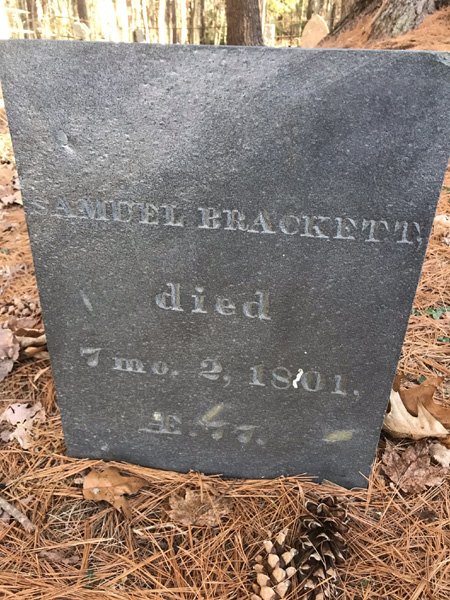History of the Farm
This is Orange Circle Farm's 12th overall year of production and 8th here in Berwick.
Jeff (that's me) started the farm in 2014 on rented land in Stratham. It looked like this at the start. Just a big field.
We grew a lot of food there and learned a lot.
Farming on rented land was never a long term solution, but it was a great opportunity to get started.
Eventually, this 70-acre property in Berwick became a more attractive option.
Maine Farmland Trust worked with the previous owners to establish an agricultural conservation easement that restricts development.
Consequently, the market value of the property dropped low enough to be affordable to purchase in 2017.
Over the next 16 months, MFT allowed the construction of a house and barn.
Beyond that, future developments are heavily restricted by the MFT conservation easement. So this will never be Berwick's newest subdivision development.
That's essentially the overview of Orange Circle Farm and how we got here.
But this land existed long before I did and has it's own story I've enjoyed learning about.
Here's the overly brief and simplified version:
Three tribes of Native Americans occupied this area of Maine:
the Pennacook and
the Abenaki and
the Sokokis
Ambrose Gibbens was the first white settler in Berwick in about 1631.
In 1671 Isaac Botts was given a land grant that likely included what is now the Tibbetts Farm next door.
Isaac Botts was killed in 1675 in one of the first heavily documented conflicts between the indigenous people and colonists in this area, King Philip's War.
King Philip being Metacomet, the sachem (chief) of the Wampanoag people.
Isaac's wife Elizabeth remarried Moses Spencer living in what is now South Berwick (Fife's Lane, near Marshwood High School).
Isaac and Elizabeth had a daughter before he died, also Elizabeth, who would inherit the land in Berwick.
But due to the intense conflicts with indigenous people in Berwick, that didn't happen until 1715 (just two years after Berwick was incorporated), long after she married her South Berwick neighbor she grew up with, Samuel Brackett I.
At that point, Berwick was the most in-land settlement in the area so tensions were high. Berwick was actually abandoned by settlers from 1690-1693.
Bracketts
Samuel Brackett I (1672-1752) was the first Brackett that came to the (South) Berwick area (from Kittery), probably in the 1680s. He married Elizabeth Botts in 1694.
Though they together inherited the 60 acres in Berwick from Isaac Botts, they lived and farmed in South Berwick.
Their son, Samuel II (1695-1786) seems to be the one who moved to that inherited land in Berwick and started clearing it for farming.
As the family grew over time, they acquired and operated these two adjacent farms.
A quick look at Berwick's 1771 tax inventory shows the property that Samuel II and his five sons claimed just before the Revolutionary War of 1775-1783.
Note these numbers probably reflect additional land beyond these two properties.
Property records through the generations show that the back 40 acres of this property (including where our garden is) came in and out of the Brackett family and extended family after 1795.
The Brackett Farms
From Samuel II to
*Samuel III (1724-1801) to
*Joseph Sr. (1792-1852) to
*Joseph Jr. (1810-1869) to
Reuben F. (1838-1915) to
Joseph B. (1864-1938) to
Joseph W. (1909-1996)
*Several members of these generations (including Daniel Gould) are buried in a cemetery at the back of this property.
This is actually Samuel Brackett III listed here.
Lives of Consequence presents a look at the lives of black individuals in Kittery and Berwick through the 18th and early 19th century.
It's probably no surpise to you that exploited labor in agriculture has taken many forms throughout the years.
Jarius Emery bought the two pieces of what is now the OCF property in 1866 and 1875. This is just after the Civil War.
The Emerys operated a dairy (then known as Blackberry Hill Farm) for several generations:
1) Jarius Emery
2) Leonard Emery
3) Hartley L Emery Sr.
4) Hartley L Emery Jr. and children
Several Emerys are still our neighbors today.
They operated the dairy until 1978 (click here to see what the land looked like in 1963), then continued to hay the property until 1988 before shifting their focus to the HL Emery tractor supply shop that used to be directly across the street from the farm (this is the lot where many of you park to pick up your CSA veggies).
The neighboring Tibbetts took over farming operations on this property (mostly haying, which they still do).
Hartley Emery Jr. sold the property to the non-farming Stickney/Covell family in 2000.
After more than a decade of living here, the Covells had trouble selling the property that included the old Brackett house and barn on 75 acres.
They decided to parcel off the five acre lot that included the buildings and sold that in 2013.
That's why that 5-acre property has that big ol barn.
Short story even shorter
We're not the first ones to farm here and we won't be the last.
We're grateful that all of those who came before us cleared this land and kept it agriculturally active.
They all resisted the temptation to transform it into a bunch of housing lots.
Now that it's formally conserved, we're simply trying to maintain and improve the health of the soil here so that it can feed many generations to come.
This is the work that you support by being a member of our CSA!
Sources include:
The Story of Berwick (1963) can be found at the Berwick Public Library
Brackett Genealogy by Herbert Ierson Brackett (1907)
Lives of Consequence by Patricia Q. Wall
York County Registry of Deeds
talks with neighbors















